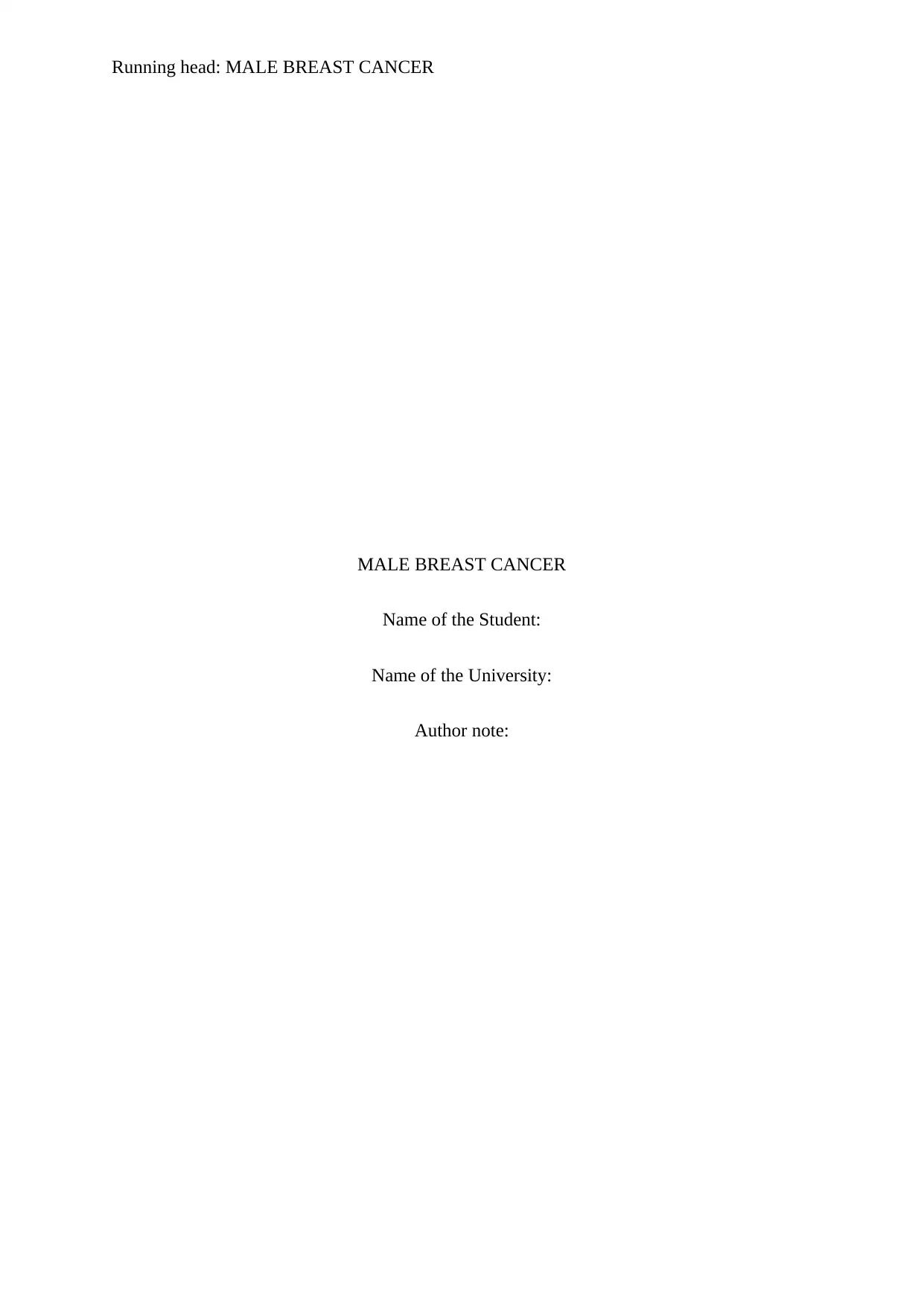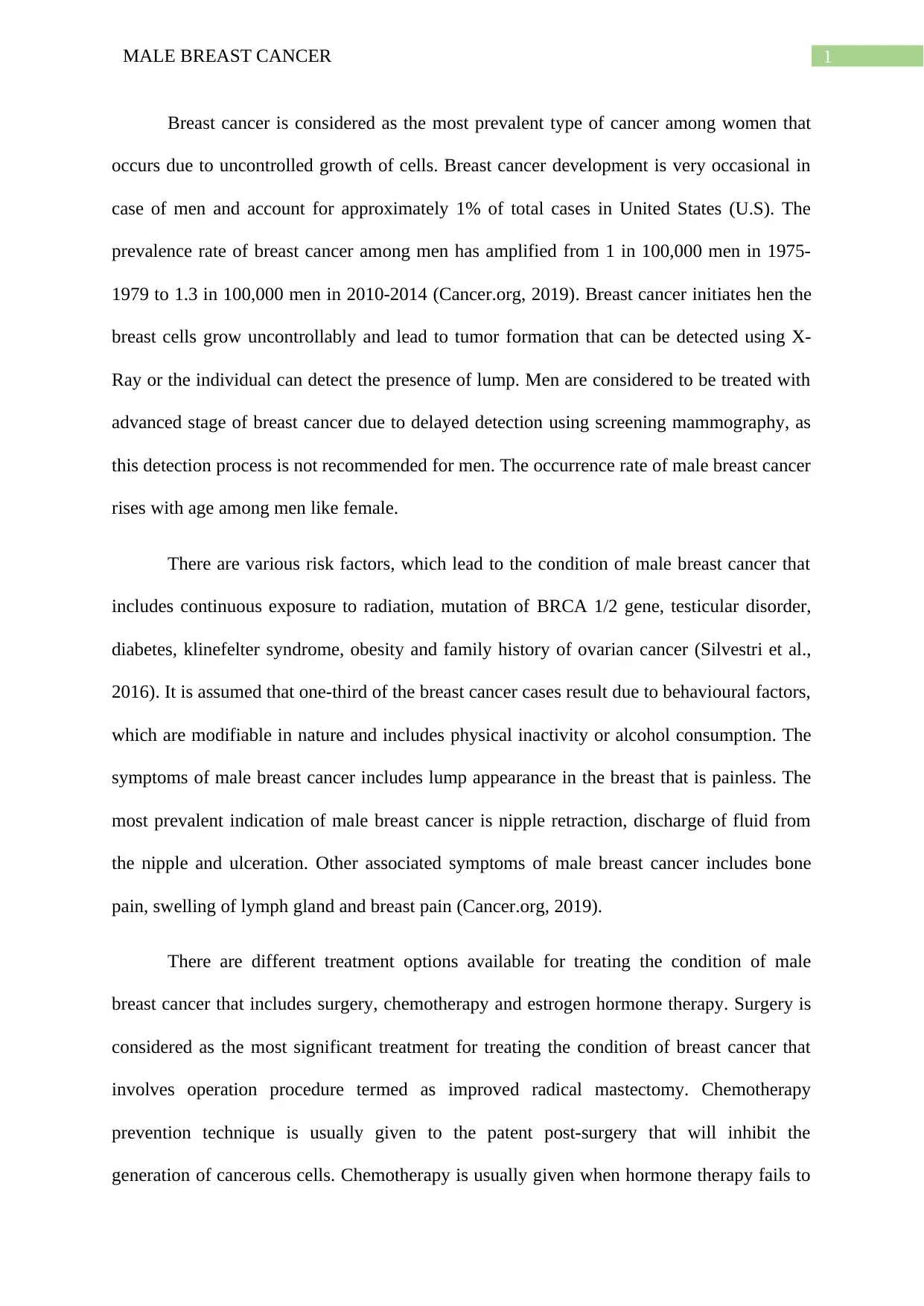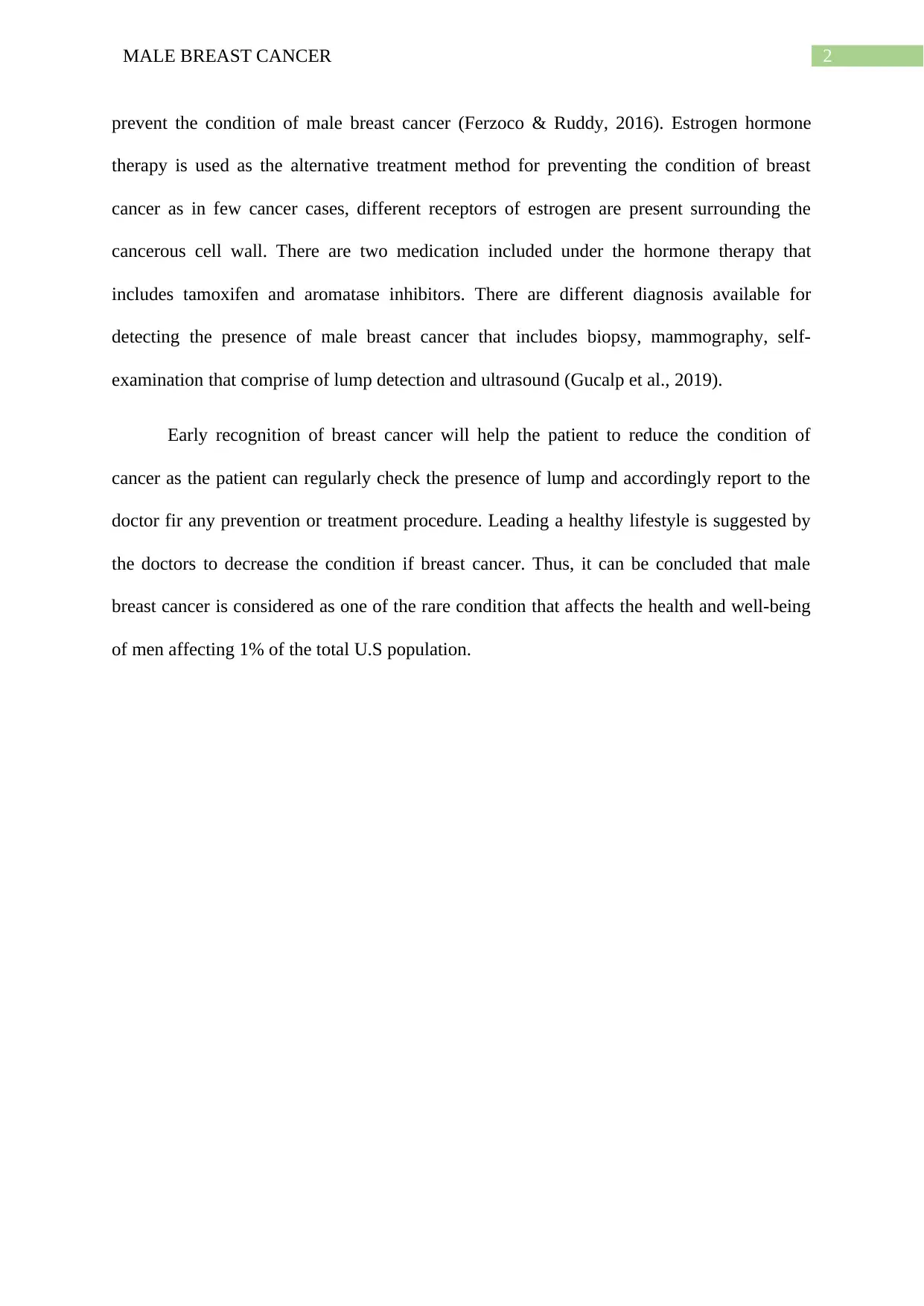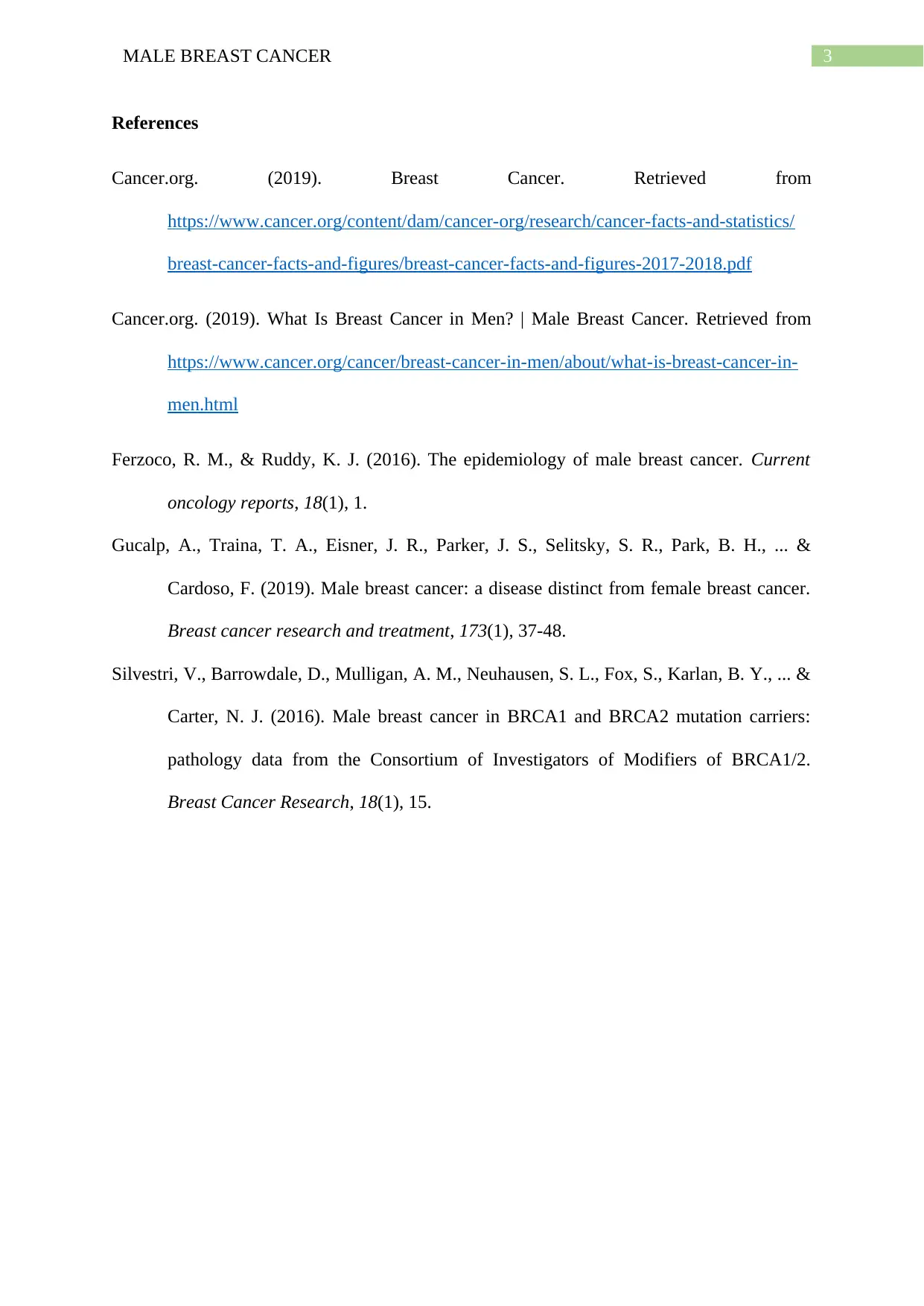Male Breast Cancer: Understanding Causes, Diagnosis, and Treatment
VerifiedAdded on 2022/11/26
|4
|797
|193
Report
AI Summary
This report provides a comprehensive overview of male breast cancer, a condition affecting approximately 1% of total cancer cases in the United States. It begins by defining male breast cancer and highlights its increasing prevalence. The report delves into the various risk factors associated with the disease, including genetic mutations like BRCA 1/2, exposure to radiation, and lifestyle factors such as obesity and alcohol consumption. It then outlines the common symptoms of male breast cancer, such as painless lumps, nipple retraction, and discharge. The report further explores different diagnostic methods, including mammography and biopsy, and discusses various treatment options, including surgery, chemotherapy, and estrogen hormone therapy. It emphasizes the importance of early detection through self-examination and regular check-ups. The report concludes by highlighting the importance of a healthy lifestyle and stresses that male breast cancer is a rare but significant health concern.
1 out of 4











![[object Object]](/_next/static/media/star-bottom.7253800d.svg)